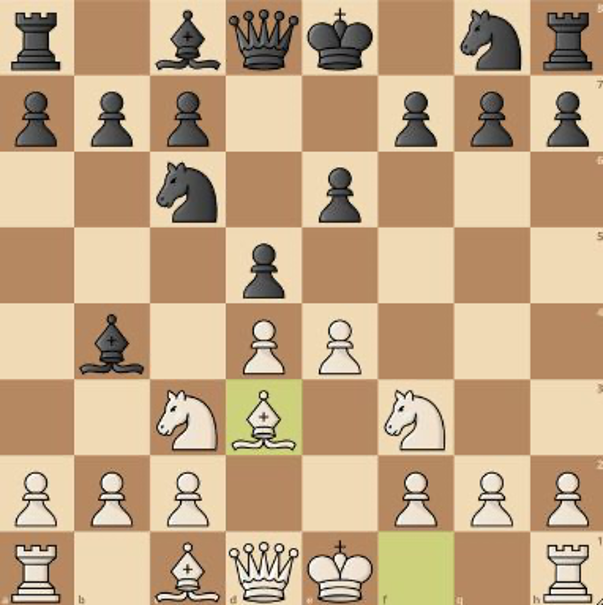Branded Content by Cosmic Press
Garry Kasparov’s famous quote, “Chess is life in miniature.” maintains its relevance because just as life occurs in stages, so does chess. Understanding what each stage represents will help us adjust the dynamics of our play according to each stage to earn us victory. We now break down each stage from the basic concepts to more complex ones.
Chess Openings
The Opening is a stage of the game where the pieces move from the starting position and prepare a formation against the opponent. The objective of the Opening is simple — use your pieces to take up as much space in the board as possible, “go forth and conquer.” The Opening aims to take up space by developing the pieces to squares that maximize their abilities. Some key principles of the Opening include:
- Control the center of the board.
- Develop the pieces as rapidly as possible.
- Keep your king safely tucked away.
- Advance your pawns to control enemy squares.
As a side note, we must understand that developing pieces rapidly keeps tempo in mind. Good players try not to play a piece more than once in the Opening because it might cause them to lose tempo if they are not careful.
Also, good players avoid giving their opponent opportunities to double their pawns, particularly on files at the board’s edge. Doubled pawns restrict the mobility of the pieces with already restricted movement and can lead to developmental challenges and even material disadvantages. Doubled pawns rarely form pawn chains, a protective formation for pawns; therefore, doubled pawns become easy pickings for opponents.
Chessable experts seldom recommend prophylactic moves like a3 and h3 (for White) and a6 and h6 (for Black) to prevent doubled pawns, p. These moves prevent the enemy bishop from pinning a knight on c3,f3,c6, or f6. Players are also advised not to develop their minor pieces to the edge a and h-squares because the enemy bishop can trade them, usually leading to doubled pawns.
Memorizing a handful of effective openings prevents players from playing according to their gut feeling and making mistakes. These openings are typically categorized into the following:
- Openings
- Defenses
- Attacks
- Games
- Systems
- Gambits
Openings are primarily dependent on what White plays, while Defenses are mainly dependent on what Black plays, and the best chess openings for White, according to Chessdoctrine, include:
- Ruy Lopez Opening
- The Italian Game
- The London System
- The Queen’s Gambit
- The English Opening
Middlegames
The middlegame is a stage of a chess game where the opposing pieces are near one another, where most pieces are still on the board. The middlegame stage is usually a chess game’s “make or break” stage. Tactics and strategy play out in full force, and both sides try to impose short-term (tactics) and long-term (strategy) plans to outwit the enemy.
Tactics are used to impose strategies, and some practical middlegame strategic principles are listed below:
- Only exchange a long-ranged piece if there is at least a slight benefit to the exchange.
- Maneuver your knights to the outposts to maximize their power.
- Avoid playing knights to the board’s edge.
- Every move should serve at least two purposes. The more purposes a move serves, the better the move, so observe.
- Understand if a piece is genuinely free before capturing it.
- Only advance a piece if it is safe on the square to which it is advancing.
- Consider checks above all other moves.
Some common tactics used in the middlegame include the transition from the Opening to the middlegame is seamless if the basic opening principles are satisfied. Once a player develops the pieces in the Opening, the foundation of a good middlegame is laid.
Endgames
The sun of a chess game sets in the endgame. It is the stage where there are fewer pieces on the board, and there is a narrower margin for error in each move. Depending on how the middlegame unfolded, the endgame can be converted to a win or held for a draw. Since few pieces are left in the endgame, it is absolutely crucial that players master the key concepts of an endgame. Some summarized concepts to understand include:
- The pawn becomes more valuable because of its likelihood of promotion.
- Since less threatening pieces are left on the board, the threat to the king is lessened.
- Therefore, the king must actively participate in the endgame.
- A player must learn how to deliver checkmates without the queen. For example, how to mate with a bishop and knight will be crucial.
- A player must understand how to evaluate a position to determine a draw.
- A player must understand endgame positions, like the Lucena and Philidor positions
- A player must be aware of castling and stalemate rules.
Conclusion
Most new players need to correct the mistake of directing over 50% of their study focus into openings, allotting less time and focus on the middlegame and endgame. Meanwhile, the standard and recommended quota is 20% for Openings, 40% for middlegames, and 40% for endgames — The famed 20-40-40 chess rule.
Branded content furnished by our promotional partners. The Daily Sundial editorial staff is not involved in its production. Content does not reflect the views or opinions of the editorial staff.








